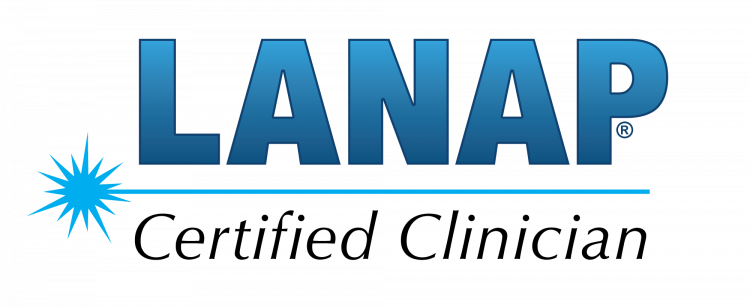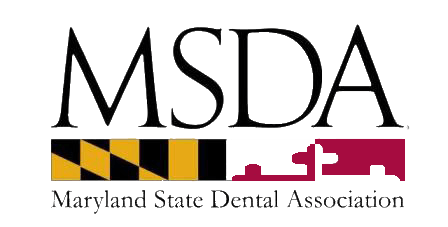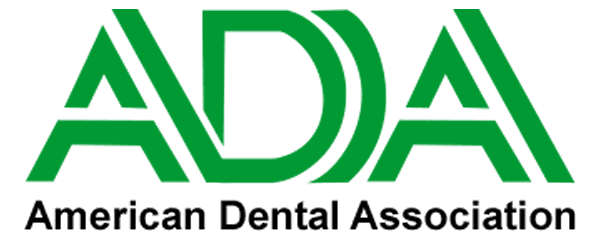Dental Extraction: Compassionate Care for Tooth Extraction
At Smile Savers Dentistry we understand that undergoing a dental extraction can be a difficult decision. Our team of highly skilled dentists, led by Dr. Anuja Patel, will provide compassionate and gentle care at every stage. You can rely on us to provide dental extractions with professionalism and precision, as we are committed to the safety and comfort of our patients.
Understanding Dental Extractions
The dental extraction procedure, also called tooth removal, can be used to treat a variety of oral health problems. Although our goal is to keep your natural teeth as long as possible, in some cases, extractions may be needed to protect your oral health. Dental extractions are performed for a variety of reasons.
If you have severe tooth decay, it may be necessary to extract the tooth in order to stop the infection from spreading and protect the surrounding teeth.
Advanced Gum Disease
Periodontal (gums) disease can cause significant damage to the supporting structure of the teeth and lead to tooth loss. If the disease is at an advanced stage, it may be necessary to extract teeth to restore oral health and prevent further damage.
Wisdom Teeth That Are Impacted
Third molars (also known as wisdom teeth) often do not have enough space to properly erupt and can become trapped under the gums. Impacted Wisdom Teeth can cause discomfort, infection, and damage to neighboring teeth. They may need to be extracted to relieve pain and avoid complications.
Orthodontic Treatment
In certain cases, it may be necessary to extract teeth as part of orthodontic treatment to make room for the other teeth and align them properly. This method helps to achieve the best results and improves the overall aesthetics and function of the smile.
Overcrowding
Overcrowding is when the space available in the dental arches is not enough to accommodate the entire set of teeth. In these cases, it may be necessary for one or more teeth to be extracted to allow the remaining teeth to align and stay stable.
Dental Extraction Process
You can expect to experience the following during your dental extraction procedure at Smile Savers Dentistry.
Pre-Extraction Planning and Evaluation
Dr. Patel will perform a comprehensive evaluation before performing the extraction. This includes examining the tooth in question and the surrounding structures. This may include a thorough examination of the condition of the tooth, its location in the dental arches, and its relationship with adjacent teeth. Digital X-rays can also be taken to determine the root structure of the tooth and any issues that could affect the extraction process. Using this information, Dr. Patel develops a customized treatment plan that is tailored to meet your specific needs.
Anesthesia and Sedation Options
There are many options for anesthesia and sedation to ensure that you remain comfortable during the procedure. Local anesthesia can be used to block pain during the extraction procedure by numbing the extraction site. Additional sedation options, such as intravenous (IV), nitrous dioxide (laughing gases), or intravenous sedation (nitrous oxide) may be recommended for patients with dental anxiety. Dr. Patel can discuss with you the options available to determine which is best for your needs and preferences.
Gentle Tooth Removal Techniques
After you have been adequately numbed and are comfortable, Dr. Patel can begin the extraction of the tooth using instruments that are designed to safely and gently remove the tooth. The extraction may begin with carefully loosening a tooth from the surrounding tissues and then gently manipulating it to remove it from the socket. If the tooth is severely decayed or impacted, sectioning may be used to ease its removal. This technique minimizes trauma to surrounding tissues. Dr. Patel, our team, and you will ensure that the entire extraction process is painless and comfortable.
Socket Preservation Techniques
Dr. Patel will recommend socket preservation methods to preserve the integrity of the extraction area and support future tooth-replacement options such as dental bridges or implants. In order to preserve the socket, a bone graft is placed into the empty space in order to promote bone growth and reduce bone loss. This proactive approach preserves the surrounding soft tissues and bone structure, creating a solid foundation for optimal aesthetics and functionality. Dr. Patel can discuss with you the benefits of socket conservation and will determine if this additional procedure is right for your treatment goals and dental health needs.
Post-Extraction Care and Recovery
Dr. Patel provides detailed instructions on how to care for yourself after extraction. This will help you heal and minimize discomfort. It may also include pain-management recommendations, such as prescription or over-the-counter medications, and instructions on how to manage swelling. You may also be given dietary instructions to help you eat well and heal the extraction site. Dr. Patel, our team, and I will be on hand to answer your questions and concerns during recovery. We will also schedule a follow-up appointment to ensure that you heal optimally.
Following-Up Evaluations and Options for Tooth Replacement
Dr. Patel will schedule a follow-up evaluation based on the type of extraction performed and the healing progress. Dr. Patel can also provide you with information on tooth replacement options that are tailored to your needs and preferences. Dr. Patel, whether you choose partial dentures or bridges, will develop a treatment plan with you that is tailored to your specific needs and preferences.
Dental Extractions Benefits
There are many benefits of dental extractions.
Relief from Pain and Discomfort
A dental extraction can relieve the pain and discomfort caused by severe tooth decay, infection, or impacted wisdom teeth. This will improve your oral health and life quality.
Prevention of Further Dental Problems
The removal of damaged or diseased teeth helps prevent infection from spreading to the surrounding tissues. It also reduces the risk of complications like abscesses and gum disease.
Improvement of Oral Function
In cases of severe decay, or when there is overcrowding in the mouth, extractions can restore normal oral function. This is done by removing sources of discomfort while creating space to allow for proper alignment.
Enhance Aesthetics
Removing teeth that are severely damaged or decayed can enhance the appearance of your smile and restore confidence.
Orthodontic Treatment Facilitated
Strategic tooth extractions for patients undergoing orthodontic treatments can create space and facilitate proper alignment, leading to more efficient and predictable treatment outcomes.
Customized Tooth Replacement Options
After extraction, Dr. Patel can discuss customized tooth replacement options that are tailored to you and your preferences. We'll help you restore your smile by restoring function and restoring the appearance of your teeth.
Choose Smile Savers Dentistry for Your Dental Extraction Needs
Smile Savers Dentistry's experienced team can provide you with compassionate care and solutions if you are experiencing pain or infection in your tooth. Our dedicated team and Dr. Patel are committed to providing exceptional dental care within a welcoming and comfortable environment. This will ensure that your extraction is as stress-free and pleasant as possible. Call us to set up a consultation today and start your journey towards a happier, healthier smile.
What patients are saying about Smile Savers Dentistry


Frequently Asked Question about Dental Extractions
What is Dental Removal?
Dental extractions, or tooth extractions, are dental procedures in which the tooth is extracted from its socket within the jawbone. Dental extractions can be classified into two categories: simple extractions, and surgical extractions.
Simple Extraction: The procedure is done on a visible tooth in the mouth. The dentist will use an elevator, a dental tool that loosens the tooth. Forceps are then used to remove the tooth from its socket.
Surgical extraction: This is a more complex type of removal and is usually performed when teeth are difficult to access or can't be seen fully in the mouth. This may be required if the teeth are impacted, badly decayed or broken. In order to reach the tooth, a small cut is made in the gum tissue. Sometimes a tiny amount of bone surrounding the tooth will also have to be removed.
Local anesthesia is administered by the dentist to the area surrounding the tooth before extraction. For more complex extractions, or patients with dental anxiety, general anesthesia may be used.
A blood clot forms in the socket after the extraction. The patient is then instructed on how best to take care of the area for healing. Some cases may require stitches to close the site of extraction. The dentist may give you instructions on how to manage pain and prescribe antibiotics. They may also recommend over-the counter pain relievers.
For various reasons, dental extractions may be performed, such as severe tooth decay, gum diseases, tooth infections, crowded teeth or preparation for orthodontic treatment.
Why are Tooth Extractions Required
There are many reasons that a tooth removal may be required. Here are a few common reasons for tooth extraction:
If the decay has reached the root of the tooth, and the structure is compromised, other dental treatments, such as crowns, fillings or root canals may not be able to save it. In these cases, the only option is to extract the tooth in order to avoid further damage and infection.
Gum Disease, also called periodontal disease or advanced gum disease, can cause teeth to loosen. When the supporting structures, such as gums and bone, are severely damaged it may be necessary for extraction to prevent the disease spreading.
Tooth infection: An infection can occur when a dental injury or tooth decay reaches the pulp, which contains blood vessels and nerves. Some cases may require a root canal to save the teeth. If the infection is severe, and it cannot be treated effectively, the tooth may need to be extracted to prevent infection spreading to the surrounding tissues.
Crowded teeth: There may not be sufficient space in the mouth for all of the teeth. This can cause crowding, misalignment and bite problems. It may be necessary to extract teeth during orthodontic treatment in order to make room for the proper alignment of remaining teeth.
Impacted wisdom teeth: Third molars or wisdom teeth are often impacted because they lack the space to fully emerge in the mouth. Impacted wisdom tooth can cause pain, infection and damage to adjacent teeth. In these cases, it is usually recommended to extract the wisdom teeth.
Trauma or fractured teeth: If the teeth are damaged or cannot be repaired, they may have to be removed.
In some cases, tooth extraction is necessary to prepare for orthodontic treatment. Some teeth will need to be removed to allow for the proper alignment of remaining teeth.
Dentists often explore alternative treatment options to save natural teeth when tooth extraction is not an option.
What are the Different Types of Tooth Extractions
Simple extraction and surgical removal are the two main types. The type of tooth extraction depends on several factors, including the location and condition of the teeth. This is an overview of the different types:
Simple Extraction: A simple extraction is done on a visible tooth in the mouth. It is usually performed under local anesthesia. A dental instrument known as an elevator is used by the dentist or oral surgeon to gently rock the tooth back and forth. Forceps are then used to remove the tooth from its socket once the tooth has been loosened. Simple extractions can be quick and simple.
The extractions performed by a surgeon are usually more complex, and they are done on teeth that cannot be seen or are difficult to reach. Other teeth may need to be removed if they are broken, badly decayed or impacted. Oral surgeons and dentists who have received specialized training perform surgical extractions. In order to reach the tooth, an incision is made in the gum tissue. A small amount of the bone around the tooth may also need to be removed. The majority of surgical extractions are performed under local anesthesia. However, general anesthesia and sedation can be used in more complex cases or to calm patients who have dental anxiety.
The following are some specific types of surgical excisions:
Impacted tooth extraction: This is the removal of a partially or fully impacted tooth, which means that it has not yet erupted completely through the gum or is stuck within the jawbone.
Wisdom Tooth Removal: Wisdom teeth (also known as third molars) are often extracted because of crowding or potential future problems. Wisdom tooth removal often requires surgery.
Broken or Fragmented Tooth Extraction. Teeth that have been severely fractured or broken may need to be surgically extracted, particularly if they cannot be repaired or restored effectively.
Root Fragment Removal: If a tooth breaks off at the gumline, leaving behind a root fragment that is not completely removed, a surgical extraction might be required to remove the remainder of the root.
To promote healing and avoid complications, it is important to follow the post-operative instructions after any type of tooth removal. Your dentist or oral surgeon will give you specific instructions about how to manage the pain and swelling at the extraction site.
Consult your dentist or oral surgeon about the best type of extraction to use for your situation. They will assess your oral health to determine the best approach.
When might a dentist recommend wisdom tooth removal?
For a variety of reasons, a dentist may recommend wisdom tooth removal. Wisdom tooth removal is often recommended in the following situations:
Wisdom teeth that are impacted: The third molars (also known as wisdom teeth) often lack the space necessary to fully emerge into the mouth. They can also become impacted if they get trapped under the gums or jawbone. The impacted wisdom teeth may cause pain, infection, damage of neighboring teeth and tumors. A dentist may recommend removing impacted wisdom teeth to prevent these problems.
Future Potential Problems: Although wisdom teeth may not be causing symptoms, dentists will often recommend that they are removed as a precaution. Wisdom teeth are difficult to clean because they are at the back. They are more susceptible to dental issues such as gum disease and infection. The future oral health problems can be prevented by removing wisdom teeth prior to these issues occurring.
Crowding, Orthodontic Treatment and Wisdom Teeth: Wisdom teeth may exert pressure on surrounding teeth when they emerge. This can lead to crowding or misalignment. Extraction of wisdom teeth is beneficial for those undergoing orthodontic treatment. It can create space, and help ensure that the correction will be effective.
Damage to Adjacent teeth: Wisdom teeth that erupt at an angle, or are misaligned can push on neighboring teeth. This pressure may cause adjacent teeth to be damaged, such as by causing tooth fractures or gum issues. The removal of wisdom teeth will help to prevent damage to nearby teeth.
Sinus problems: Wisdom teeth located near the sinuses may cause sinus problems such as sinusitis and sinus infections. In these cases, it may be necessary to extract the wisdom teeth in order to resolve sinus-related problems.
Wisdom tooth removal is often recommended after a thorough exam, which includes dental X-rays to assess the alignment and position of the wisdom teeth, as well as any potential risks. Consult your dentist or oral specialist who can evaluate your situation and give you personalized advice about whether wisdom tooth removal is required.
When do Braces require the extraction of teeth?
In some cases, tooth extraction is necessary to complete orthodontic treatment. The decision on whether to extract teeth depends on factors such as the severity of the dental misalignment and the available space in your mouth. It also depends upon the treatment goals. These are some situations in which braces can require the extraction of teeth:
When there is not enough room in the jaw to align teeth properly, tooth extraction can create space. Crowding is caused by teeth that overlap or are misaligned. The remaining teeth can be aligned in the space available by removing the overlapping or misaligned ones.
Protrusion: An excessive protrusion of the front teeth can affect both appearance and function. Tooth extraction allows the orthodontists to move the front teeth back into place, reducing protrusion.
Bite Alignment - Significant jaw misalignment can require tooth removal to achieve proper alignment. By facilitating correction of the jaw relationship, extraction can help correct severe overbite and underbite.
Midline correction: If the midline between upper and lower jaws is not aligned, this can affect smile aesthetics. Extraction of specific teeth may help to achieve a better midline alignment.
The extraction of teeth as part orthodontic treatment is planned carefully. Orthodontists perform thorough evaluations including X-rays and exams to determine the most effective course of treatment for improved alignment and function.
Your orthodontist will assess your case and discuss your treatment options. This may include tooth extractions if needed. You will also receive personalized recommendations that are based on your treatment goals and dental needs.
What is the Best Age for Children to have their teeth extracted and filled?
In the case of young children, tooth filling and extraction are only considered when other treatments are not sufficient. Considerations for tooth extraction and dental filling in children
In the following cases, it may be necessary to extract a child's teeth:
To prevent infection and maintain good oral health, it may be necessary to extract a severely decayed primary tooth.
Crowding and Orthodontic Treatment - In cases of crowding, or when permanent teeth have been impacted, it may be necessary to remove specific primary teeth in order to facilitate orthodontic treatment.
Impacted teeth: When primary or permanent teeth cannot erupt normally, extraction may be required to help prevent complications and promote a healthy eruption.
Trauma: If the tooth is damaged or fractured severely, and cannot be repaired, it may be necessary to extract it. This can be a serious risk to your oral health.
The decision to extract a child's tooth is made individually and involves an evaluation by either a pediatrician or oral surgeon. Considerations include the child's dental health and age.
Fillings can be used to treat primary and permanent tooth cavities. Fillings are used to treat cavities in primary and permanent teeth.
It is essential to preserve primary teeth for proper oral health and to prevent complications. Consultation with a dental professional or pediatric dentist is essential to determine which treatment will be most effective for the child, based on their specific needs and oral health in the long term.
Seeking professional guidance is important for the development and oral health of young children. Pediatric dentists are able to provide personalized treatment plans and recommendations tailored to the unique circumstances of each child.
When would I need to have my teeth extracted if I had gum disease?
In certain cases, it may be necessary to extract teeth due to gum disease. This is an SEO optimized version of the following:
In some cases, tooth extractions may be required to treat gum disease and prevent further complications. Consider these factors:
Severe periodontitis. In the advanced stages of gum diseases, also called periodontitis (gum disease), the infection and inflammation may cause damage to tissues that support the teeth including the jawbone, periodontal ligament and gums. When periodontitis has caused extensive bone loss, tooth mobility and severe infection, the only way to stop the progression of the disease and eliminate the source is to extract the teeth.
Loose teeth: As gum disease advances, the gums can recede and form deep pockets around your teeth. The teeth may become loose as the support weakens. If the teeth cannot be saved or stabilized through periodontal treatment, they may need to be extracted.
Tooth infection: Gum diseases can cause tooth infections known as dental abscesses. Infections that cannot be treated effectively with root canal treatment or other dental procedures may require extraction to prevent the infection from spreading to other parts of the body.
Compromise of Overall Oral health: Multiple teeth can be affected by advanced periodontal disease. This compromises the overall health and functionality of your mouth. If the majority of teeth are damaged or in danger due to gum diseases, extraction can be recommended as a part of an overall treatment plan.
When it comes to gum diseases, tooth extraction is usually a last option. Dentists or periodontists are likely to try to maintain natural teeth, while also exploring various treatment options, such as scaling and root planing, antibiotics and surgical interventions to control gum disease and maintain good oral health. Early intervention and regular dental checkups are essential to prevent gum disease from reaching a stage that requires tooth extraction.
Do All Tooth Extractions Qualify as Oral Surgery?
 Button
ButtonNot all tooth extractions require oral surgery. General dentists are usually able to perform simple extractions that remove visible teeth and are easily accessible. Oral surgery is not required for these simple extractions. Oral surgery may be required for surgical extractions such as the removal of impacted teeth or severely damaged ones
What should I do if I have an urgent tooth extraction?
It is important to seek immediate dental treatment if you need an emergency tooth removal. You have a few options:
Contact your regular dentist first. Most dental offices will treat emergency cases, or refer you to a dentist who can. They can assess the situation and offer treatment including tooth extraction if necessary.
There are many emergency dental clinics in different areas that provide immediate dental care. These clinics usually have extended hours including weekends and evenings to accommodate urgent cases like tooth extractions.
Hospital Emergency Room - If you cannot reach a dental clinic or dentist, or your condition is a medical concern, you may visit the emergency department of a hospital. The emergency room can assess your situation and provide temporary relief. If necessary, they will refer you to a dentist.
For non-life threatening emergencies, it's best to visit a dentist. They are equipped with the necessary equipment and knowledge to deal with dental emergencies, including tooth extractions, if required.
It's important to seek immediate medical attention in any dental emergency to alleviate pain and discomfort.
How long is the tooth extraction procedure?
The length of an extraction procedure depends on a number of factors. These include the complexity of extraction, the number and location of teeth to be extracted, as well as the circumstances of each patient. A simple tooth extraction usually takes between 20 and 40 minutes. The preparation, the administration of anesthesia and the removal of the tooth with forceps are all included. More complex extractions such as multiple extractions or surgical extractions may take up to an hour. These timeframes should be considered approximate and can change depending on the circumstances. Before the procedure, your dentist or oral surgeon can give you a more accurate estimation.
Do I need a dental implant after tooth extraction?
Dental implants are needed after a tooth removal depending on a variety of factors. Here are some scenarios in which dental implants might be recommended.
Single Tooth Removal: If only one tooth is removed and not replaced, the adjacent teeth may shift, chewing can be affected and bone loss could occur. Dental implants are a functional, aesthetic and long-lasting replacement for a missing tooth.
Dental implants can be used to replace multiple missing teeth.
Personal Preferences: Many individuals choose dental implants to replace a missing tooth, even if it is just one. They find them durable and look natural.
Not all extractions of teeth require dental implants. Alternative options like dental bridges or removable dentures may be suitable depending on your needs.
Consult your dentist or oral specialist to determine if you need dental implants after tooth extraction. They will assess your oral health and discuss options for replacement, before recommending the best treatment plan.
Seek professional advice on tooth extraction options and replacements.
Can a dentist make me sleepy during tooth extractions?
It is rare for a dentist, during a routine extraction of a tooth, to use general anesthesia in order to make you sleep. Local anesthesia is usually used for simple extractions, which numbs around the tooth. If you have dental anxiety, or if the extraction is complex, oral sedatives and intravenous sedation are possible. General anesthesia is reserved for surgical extractions such as impacted wisdom teeth. The appropriate sedation will be determined by the complexity of your extraction and the level of anxiety you have. We will discuss your concerns and preferences to ensure that you have a comfortable experience.
How should I brush my teeth following a tooth removal?
After a tooth removal, brushing your teeth requires extra care to prevent infection and promote healing. Here are some tips for brushing after a dental extraction.
Wait until the right time: You should wait for the site of the extraction to heal completely before you resume regular brushing. You will receive specific instructions from Dr. Patel, but you should wait between 24 and 48 hours before brushing.
Gentle Approach: Brush gently around the extraction site in order to avoid irritating the blood clot. Use a toothbrush with a soft bristle and apply light pressure.
Brushing the Extraction Site is not recommended until the site has healed. Brush the rest of your teeth, your gums and tongue instead to maintain good oral hygiene.
Rinse your mouth with saltwater. Dr. Patel may suggest that you rinse your mouth with warm salted water after eating or snacking in the first few weeks following your extraction. This will help keep the area clean, and encourage healing.
Take Care of Your Sutures. If you have stitches, be careful not to disturb them when brushing. If necessary, Dr. Patel will give you specific instructions for cleaning the area around sutures.
Follow any post-extraction instruction provided by Dr. Patel. You may be instructed to use a mouthwash prescribed by Dr. Patel, avoid certain foods or use a specialized oral wash.
Maintain good oral hygiene: Brush your teeth twice daily and gently floss to maintain overall dental health.
Don't forget to ask your dentist or oral surgeon about personalized instructions tailored to your situation. You can get tailored advice on when you should resume normal brushing after a tooth removal. They will also tell you what additional precautions to take for optimal oral care and healing.
What do I need to know about recovery and aftercare following a tooth extraction?
Aftercare is essential to healing and minimizing complications. What you need to know is:
For optimal recovery, follow the post-extraction instructions given by your dentist or oral surgeon. These instructions may include pain management, swelling control, prescribed medications, and guidelines for bleeding control.
To control bleeding, apply gentle pressure using clean gauze to the extraction site. As needed, replace the gauze. If bleeding continues or becomes excessive, contact Dr. Patel.
Reduce Swelling: Apply ice packs or cold compresses to the affected area for 24 hours. Then, use warm compresses for healing.
Take Pain Medication. Take pain medication according to the directions if it is prescribed. For mild to moderate pain, over-the-counter pain relief may be sufficient.
Maintain Oral Hygiene. Continue to brush and floss the remaining teeth, avoiding the extraction area. Avoid vigorous rinsing and spitting for the first 24 hours.
Avoid Smoking and Sucking: These activities can cause the blood clot to be dislodged and hinder healing.
Consume soft foods: Start with a diet of soft foods to reduce pressure at the extraction site. As you heal, gradually reintroduce solid food.
Restriction of Strenuous Activities: Limit physical activity for the first few weeks to avoid complications such as swelling, bleeding and complications. Rest well during the first few days of recovery.
Attend follow-up appointments: Scheduled follow-up visits with your oral surgeon or dentist are important for monitoring any issues and addressing them.
Report any issues: Contact Dr. Patel immediately if there are any problems. This includes severe pain, excessive bruising, persistent swelling, signs or infection.
Each person's recovery may be different, so it is important to follow the specific instructions provided by Dr. Patel. You can make a more comfortable and faster recovery after a tooth removal by following the right aftercare procedures and addressing any issues as soon as they arise.
Why shouldn't you rinse after a tooth extraction procedure?
It is important to avoid rinsing your mouth after tooth extraction in order to ensure proper healing and minimize complications. Here's why:
Protection of Blood Clot After extraction, a clot is formed to aid in healing. Forcefully rinsing can cause the clot to be dislodged, resulting in a painful condition known as dry socket. It is important to protect the blood clot for a quick recovery.
Preventing Infections: The blood clot is a natural barrier that prevents bacteria from entering and infecting the extraction site. Too soon rinsing can disturb the clot, increasing the risk of infection. This risk is reduced by letting the clot remain intact.
Promoting Clot Stability : As the healing process proceeds, the blood clot is stabilized, which allows for the formation of new tissues. Rinsing out the clot can interfere with healing. For a successful recovery, it's crucial to maintain the clot.
It is recommended that you avoid rinsing and spitting in the first 24 hours following extraction to ensure a good healing process and minimize complications. Consult Dr. Patel if you have any questions or concerns regarding the post-extraction process.
Following these guidelines will help you promote a quick recovery and reduce complications such as dry sockets and infections.
What is "dry socket", and how can it be avoided after tooth extraction?
Dry socket is also called alveolar osteitis. It can develop after tooth extraction if the blood clot normally formed in the socket dislodges or dissolves too early. How to avoid dry socket following a tooth removal:
Follow the Post-Extraction Instructions: It's important to follow Dr. Patel's post-extraction instructions. These instructions could include guidelines for oral hygiene, pain control, and avoiding certain things.
Avoid smoking and tobacco use: Smoking or using tobacco products increases the risk of dry sockets. To promote healing, it is best to avoid smoking for 72 hours following the extraction.
Gentle Oral Care: Brush your teeth gently, and avoid the extraction site. Rinse your mouth carefully, especially in the first few days of healing, to avoid dislodging any blood clots.
Avoid Sucking and Spitting: Avoid sucking or spitting, or any other activity that can create suction, as this may dislodge a blood clot or delay healing.
Keep a Soft Foods Diet: For the first few days following the extraction, stick to foods that don't require you to chew excessively. Eating nutrient-rich, soft foods can help prevent the blood clot from being dislodged while also providing nutrition necessary for healing.
Exercise and strenuous activity can cause blood pressure to rise and disrupt the blood clot. After the extraction, limit physical activity for a couple of days to help with clot stabilization.
Attend follow-up appointments: Attend your scheduled follow up appointments with your dental office. They will monitor healing, remove stitches if needed, and give additional advice on how to care for your teeth after extraction.
Contact Dr. Patel immediately if you notice symptoms like severe pain in the neck or ears, an unpleasant taste, or odor.
Following these guidelines, and maintaining good dental hygiene will help you minimize the risk of dry sockets after tooth extraction. This will also promote a comfortable and smooth healing process.
How long after tooth extraction should I exercise?
It is recommended that you wait between 24 and 48 hours after a tooth extraction before you resume any strenuous activity or exercise. Following a tooth removal, here's an overview of the general timeframe for exercise:
Rest and avoid physical activity immediately following the extraction. Let your body recover and begin the healing process.
During the first 24 to 48 hours, you should limit physical activity in order to avoid complications like dislodging a blood clot and increasing swelling or bleeding. Rest and gentle activity are the main focus.
48 Hours After: You can slowly reintroduce physical activity or light exercise after the initial 24-48 hours. Listen to your body, and increase intensity gradually as you feel comfortable.
Consult your dentist or oral surgeon for advice tailored to your specific situation. They may recommend that you wait longer to resume exercise depending on your recovery progress and the complexity of the procedure.
Remember that recovery times can vary from person to person. It's important to prioritize your oral health, and to follow any post-extraction instructions given by Dr. Patel. Allowing adequate time for healing and slowly returning to physical activity can help you recover more quickly after a dental extraction.
How long does it take to heal from a dental extraction?
Recovery time can vary depending on a number of factors, including the complexity and difficulty of the tooth extraction, an individual's health overall, and the degree to which post-operative instructions are adhered to. Here are some guidelines for general recovery:
Initial Healing: The healing process takes approximately 1 to 2 weeks. You may feel some pain, swelling and slight bleeding around the extraction site during this period. The symptoms will gradually subside over the next few days.
The healing of the bone in the socket after extraction can take several weeks. The bone undergoes remodeling whereby new bone is formed to fill the gap left by the tooth extraction. The process may take several months.
Soft Tissue Healing: The gums, and the soft tissues surrounding the extraction site, usually heal in a matter of weeks. The gum tissue will slowly close and reform, covering the extraction socket.
Each individual's recovery time may differ. Maintaining good oral hygiene and attending all necessary follow-ups with your oral surgeon or dentist can facilitate a quick and smooth recovery.
It is important to consult your dentist for advice and evaluation if you are experiencing severe or prolonged discomfort, excessive bleeding, swelling or signs of infection during your recovery. Dr. Patel can evaluate your situation and offer appropriate advice or treatments to promote healing.
When should I make an appointment for tooth extractions?
Your dentist or oral surgeon should recommend that you schedule an appointment to have a tooth extracted. Timing will vary depending on a number of factors including the urgency, reason, and availability of your dentist. You may need to make an appointment for tooth extraction in the following situations:
Dental Exam: If you have tooth pain or discomfort, as well as any other dental problem, it's best to schedule an appointment as soon as possible. Dr. Patel will assess the condition of the teeth and determine whether extraction is required.
You may need immediate dental treatment if you are experiencing severe pain, an infection or trauma. Call Dr. Patel or an urgent dental clinic and explain the situation. If necessary, you can schedule an appointment with an emergency dental clinic.
Treatment planning: If a dentist determines that a tooth needs to be extracted during a routine exam, they will recommend making an appointment at a time convenient for you and your dental practice.
Communication with Dr. Patel is important. You should provide relevant information regarding your dental history and symptoms. They can then determine the best time to extract the tooth based on urgency and complexity.
Early intervention can be beneficial in preventing complications and ensuring optimal oral health. Consult Dr. Patel if you're unsure of the best time to have a tooth extracted. They can provide personalized advice on the best appointment.
Are you suffering from toothache or do you need a dental extraction? Do not wait! Contact our dental clinic to book an appointment today with our team of experienced professionals. Our professional and gentle tooth extraction services will relieve your pain and restore oral health. Contact us at 240-390-0990 to take the first step toward a healthier smile. "We're here to assist you!"











